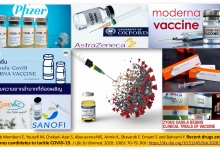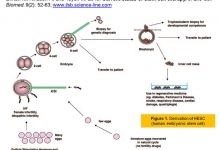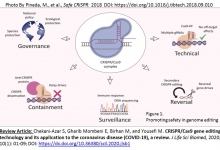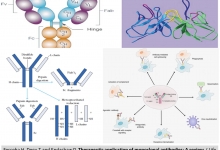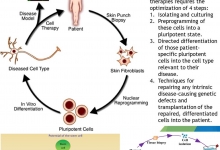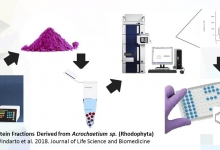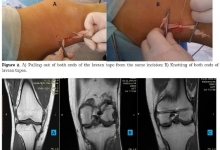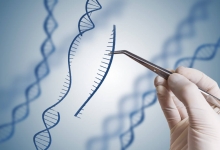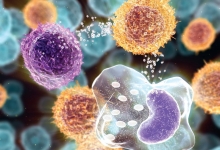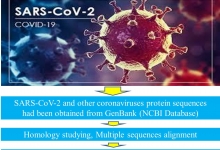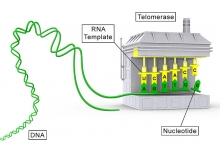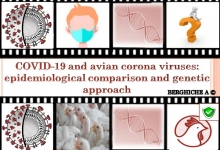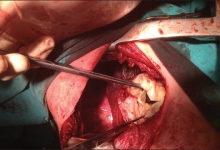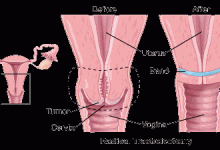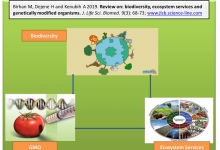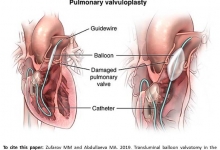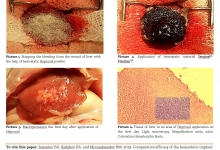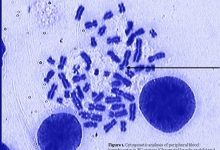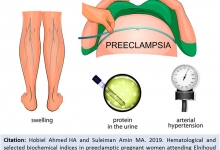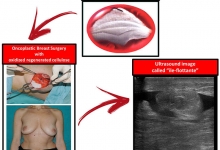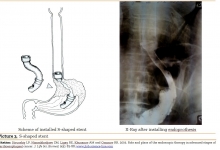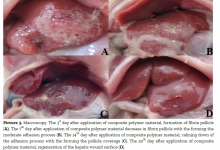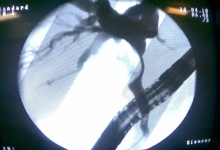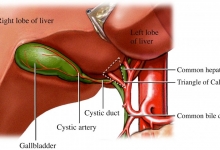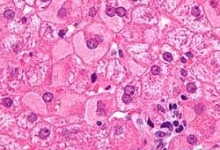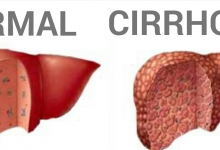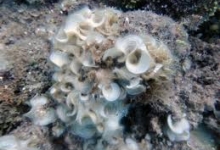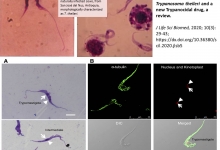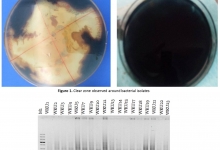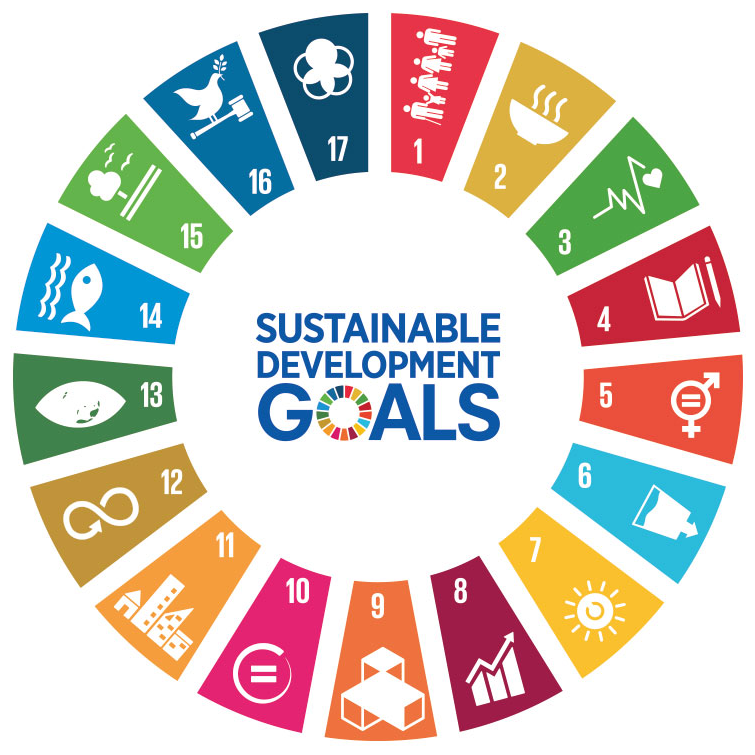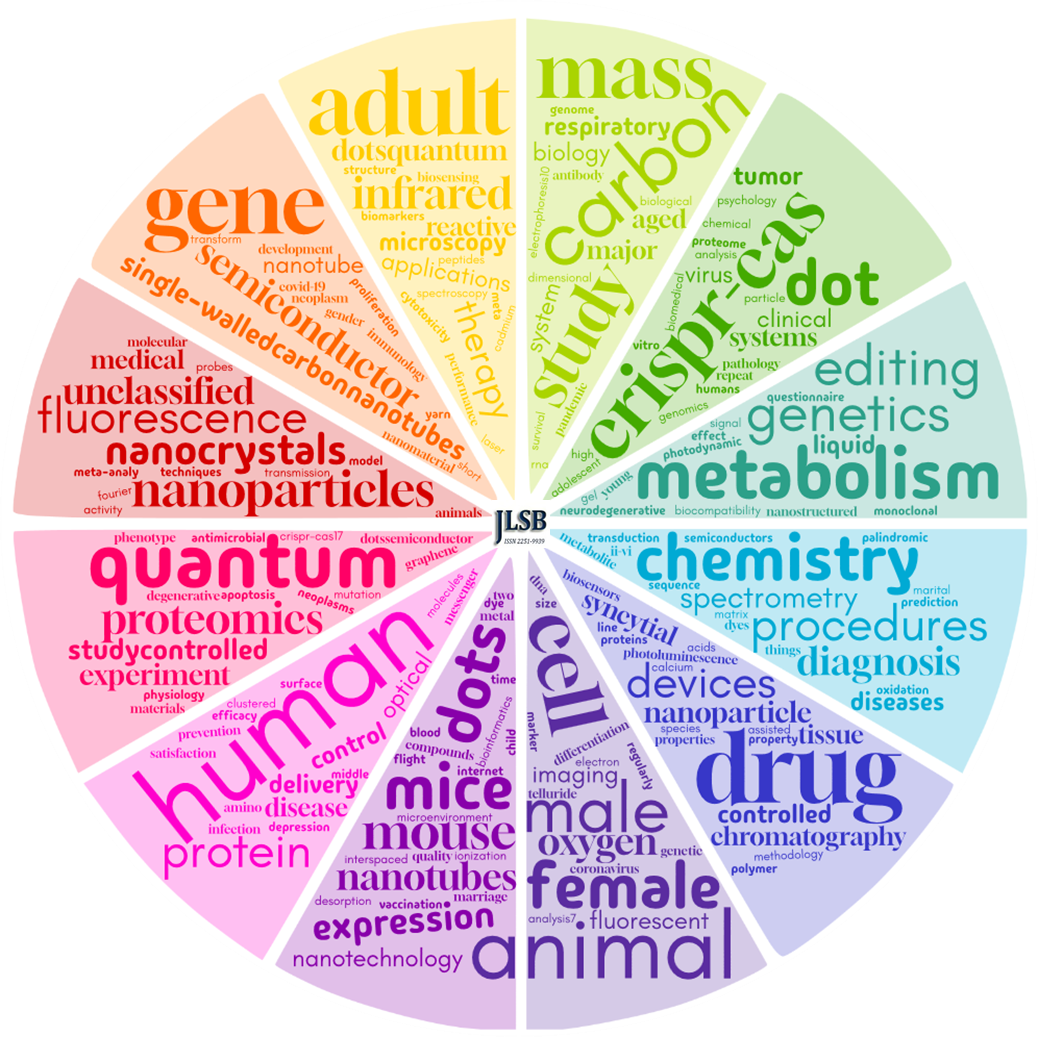Previous issue | Next issue | Archive
![]() Volume 15 (3); September 25, 2025
Volume 15 (3); September 25, 2025
| Knowledge, attitude, practice about breast cancer and its screening among female health professionals working at health care facility found in East Gojjam, Ethiopia |
Research Paper
Knowledge, attitude, practice about breast cancer and its screening among female health professionals working at health care facility found in East Gojjam, Ethiopia
Belete D, Tilahun M, Biyazn Z, and Damite W.
J. Life Sci. Biomed., 15(3): 62-70, 2025; pii:S225199392500008-13
DOI: https://dx.doi.org/10.54203/jlsb.2025.8
Abstract
Breast cancer is the leading cause of death among reproductive-age women worldwide and the second leading cause of death among women in Ethiopia. Regular breast self-examination is the most cost-effective method for the early detection of breast cancer. Despite this fact, breast self-examination was low among women in the general population and it was not well documented among health care workers. To explore the knowledge, attitude, and practice about breast cancer and its screening among female health professionals working at public health facilities found in Debre Markos administrative town East Gojjam, Ethiopia. An Institutional-based cross-sectional study design was conducted among female health professions working at public health facilities found in Debre Markos administrative town. A systematic random sampling technique was used from different professionals and a separate sample was taken independently from each. A pre-tested structured questioner was constructed and collects data then Descriptive statistics were used to analyze data by using SPSS version 20. A total of 352 female health professions were included in the study with a response rate of 83.4%. The mean (±SD) age of participants was 24.82(±1.5) years. All of the study participants have heard about breast cancer. 186(52.8%) of them had good, 192 (54.5%) had a positive attitude, 183(52%) have good practice of breast cancer and its screening. 195(55.4%) mentioned that they self-examine their breast at least once in their lifetime, 41 (11.6%) said they had undergone breast examination by clinicians and only five (1.4%) mentioned that they had mammographic screening. Even though the study findings revealed that the majority of study participants had good knowledge of breast cancer, there are still some negative attitudes towards the screenings and practices about breast cancer, there is an alarming increase of breast cancer, therefore the study recommends that, the Ministry of Health and Social Services in collaboration with various stakeholders to develop some strategies on how to address the issues of early detection of breast cancer among female health professions.
Keywords: Knowledge, attitude, practice, Brest cancer
[Full text-PDF] [ePub] [Export citation from ePrint] [How to Cite]
| Prevalence of erectile dysfunction in patients with chronic kidney disease on renal replacement therapy |
Research Paper
Prevalence of erectile dysfunction in patients with chronic kidney disease on renal replacement therapy
Kariev SS, Nasirov FR, Shavakhabov SS, and Ibadov ER.
J. Life Sci. Biomed., 14(3): 71-77, 2025; pii:S225199392400009-13
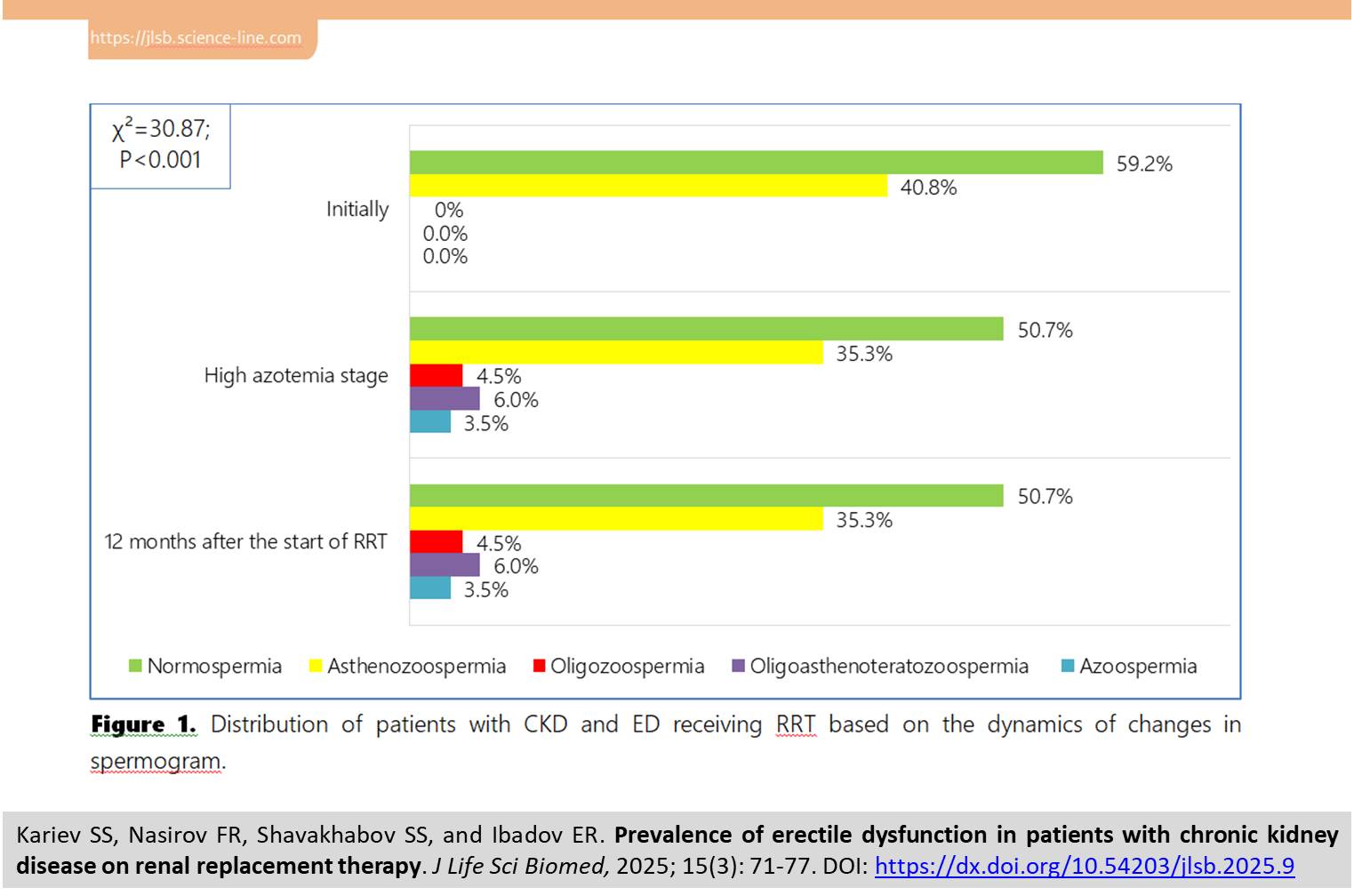 DOI: https://dx.doi.org/10.54203/jlsb.2025.9
DOI: https://dx.doi.org/10.54203/jlsb.2025.9
Abstract
The current study aimed to investigate the prevalence of erectile dysfunction (ED) in patients with chronic kidney disease (CKD) on renal replacement therapy (RRT) in the form of hemodialysis (HD). The study included the data of prospective observation of 201 patients on hemodialysis program. The erectile function (EF) was assessed using the International Index of Erectile Function (IIEF‐5) score, doppler sonography of the penile arteries was used to diagnose hemodynamics in the vessels of the penis, the hormonal profile of patients was determined using testosterone, luteinizing hormone, and follicle-stimulating hormone levels, and reproductive function was determined using a spermogram at three stages of the study: initially, high azotemia and 12 months after start of RRT. The results showed that in patients on hemodialysis, ED progression was noted with a decrease in IIEF-5 score from 21.9 to 9.7 points (P<0.001). The average peak systolic velocity in the right cavernous arteries decreased from 6.5±0.1 to 4.8±0.1 cm/s (P<0.001), and also testosterone level, luteinizing hormone, follicle-stimulating hormone, and the frequency of normospermia were significantly decreased (P<0.001), while there was an increase in cases of pathological disorders of spermatogenesis in total up to 14.0% (P<0.001). It is concluded that there is persistence of multifactorial erectile dysfunction caused by vascular, hormonal and structural changes in patients with CKD on RRT in the form of HD.
Keywords: Chronic kidney disease, erectile dysfunction, renal replacement therapy
[Full text-PDF] [ePub] [Export citation from ePrint] [How to Cite]
Previous issue | Next issue | Archive
![]() This work is licensed under a Creative Commons Attribution 4.0 International License (CC BY 4.0)
This work is licensed under a Creative Commons Attribution 4.0 International License (CC BY 4.0)
Previous issue | Next issue | Archive
| Comparative analysis of treatment outcomes in chronic pancreatitis complicated by pancreatolithiasis |
Research Paper
Comparative analysis of treatment outcomes in chronic pancreatitis complicated by pancreatolithiasis
Ismailov S, and Mirolimov M.
J. Life Sci. Biomed., 15(2): 42-48, 2025; pii:S225199392500006-15
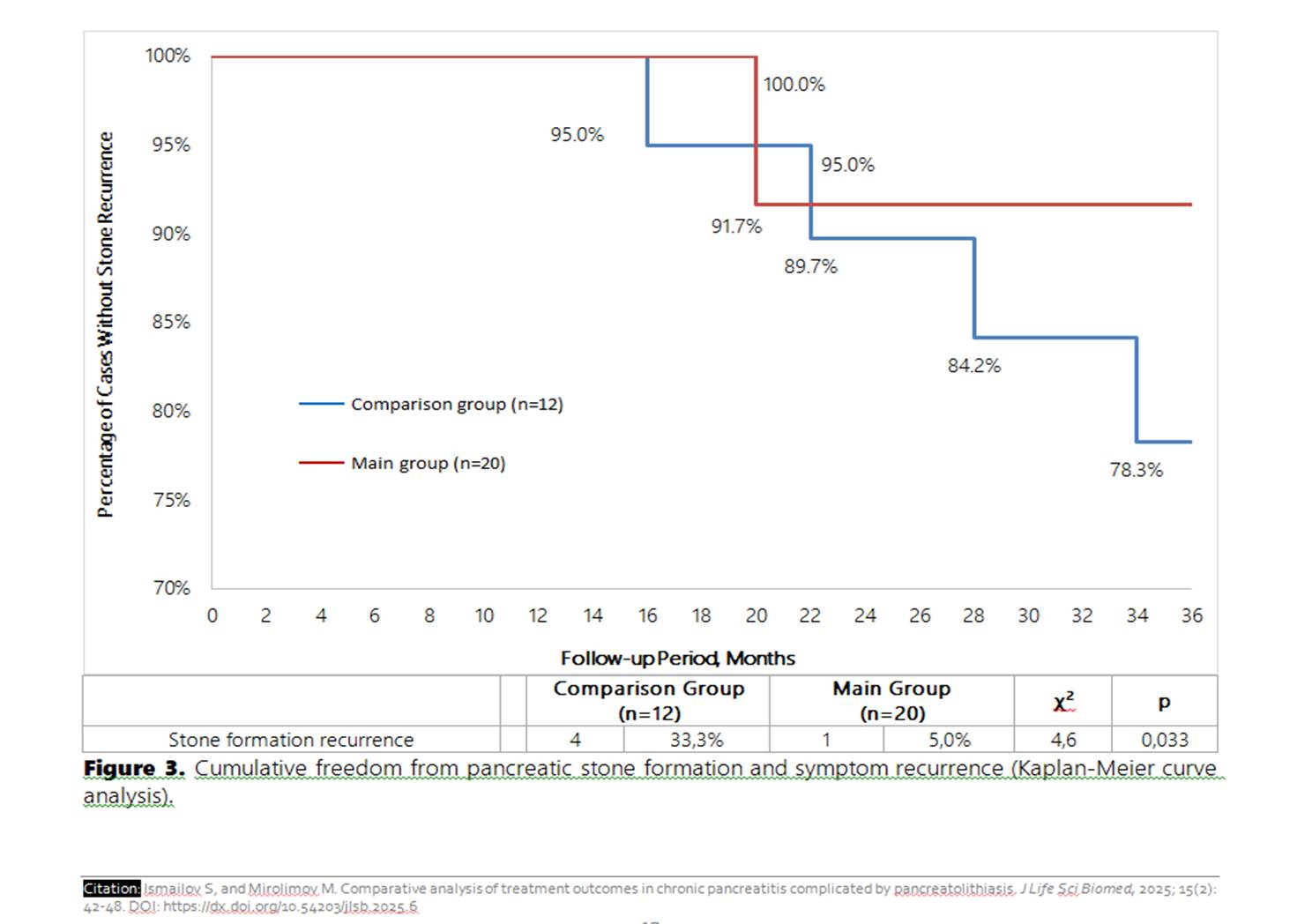 DOI: https://dx.doi.org/10.54203/jlsb.2025.6
DOI: https://dx.doi.org/10.54203/jlsb.2025.6
Abstract
To evaluate the outcomes of a modified Puestow-type pancreaticojejunostomy in patients with chronic pancreatitis complicated by pancreatolithiasis. The study included 32 patients who underwent surgical treatment for pancreatolithiasis. The main group consisted of 20 patients who received the authors' modification of the anastomosis, while the comparison group included 12 patients treated using the standard technique. Parameters assessed included operation duration, mechanical ventilation time, length of hospital stay, complication rates, and recurrence rates. Statistical analysis involved the t-test, χ² test, and Kaplan-Meier survival analysis. The results showed showed a significant reduction in operation time (113.5±6.8 vs. 134.4±5.7 minutes; p=0.025), mechanical ventilation duration (3.0±0.3 vs. 4.25±0.5 hours; p=0.04), and hospital stay (6.3±0.5 vs. 8.4±0.8 days; p=0.033) in the main group. Postoperative complications occurred less frequently, and no reinterventions were required. The recurrence rate of stone formation was reduced from 33.3% in the comparison group to 5.0% in the main group (p=0.033), with cumulative recurrence-free survival of 91.7% versus 78.3%. The modified pancreaticojejunostomy technique provides superior surgical and clinical outcomes in pancreatolithiasis, significantly reducing the risk of recurrence and complications. The study recommended that the modified technique should be considered the preferred surgical option for patients with chronic pancreatitis and pancreatolithiasis.
Keywords: Chronic pancreatitis, pancreatolithiasis, pancreaticojejunostomy, Puestow modification, stone recurrence.
[Full text-PDF] [ePub] [Export citation from ePrint] [How to Cite]
| Cellular and Molecular mechanisms for invasion, growth and pathogenesis of Plasmodium species in human |
Review
Cellular and Molecular mechanisms for invasion, growth and pathogenesis of Plasmodium species in human
Woldegerima E, Getachew F, Misganaw M, Belete D, Aemiro M, Sisay T, Berhane N.
J. Life Sci. Biomed., 14(2): 49-61, 2025; pii:S225199392500007-15
 DOI: https://dx.doi.org/10.54203/jlsb.2025.7
DOI: https://dx.doi.org/10.54203/jlsb.2025.7
Abstract
Malaria is a disease of humans caused by protozoan parasites of the genus Plasmodium with a complex life cycle. Invasion is initiated when merozoites invade circulating erythrocytes. Many proteins, parasite ligands, and host receptors are involved in signaling and erythrocyte membrane fusion. The tight junction and formation of the parasitophorous vacuole membrane must fuse to seal the invasion process. The development of intracellular parasites in conjunction with human evolution has resulted in the establishment of intricate molecular contacts between the parasite and the host cell. These interactions serve the purpose of invading host cells, facilitating migration across different tissues, evading the host immune system, and undergoing intracellular replication. The occurrence of cellular migration and invasion events is crucial for both growth and the development of disease pathogenesis. To review literature written on cellular and molecular mechanisms for invasion, growth, and pathogenesis of Plasmodium species in humans. Literature written on cellular and molecular mechanisms for invasion, growth, and pathogenesis of Plasmodium species in humans was systematically reviewed from 2000–2021 years on Google Scholar sources, Pub Med, and Medline. The key words used to search were erythrocyte, growth, invasion, malaria, and molecular mechanism Pathogenesis, Plasmodium, Red Blood Cell, and Host-parasite Interaction. Malaria is a major health problem caused by protozoan parasites of the genus Plasmodium, whose obligate intracellular life cycle is complex. They use molecular mechanisms to gain access to the host cell and multiply; their apical organelles integrate secretary functions. These secretary organelles, which are proteins in nature, are responsible for successful attachment, reorientation, and invasion of host cells and use Hgb as a nutrient for growth and development. Hgb degradation occurs in an acidic digestive vacuole. During growth, three morphologically distinct phases are observed, and pathogenesis is due to several mechanisms, such as the production of toxins, the sequestration of infected RBC in different organs, the production of inflammatory mediators by the innate and adaptive immune responses, and the hemolysis of RBC. This review was an overview of the molecular and cellular mechanisms for invasion, growth, and pathogenesis of Plasmodium parasites in various aspects of parasite biology and host cell tropism and indicated opportunities for malaria control and the development of an effective vaccine.
Keywords: Cellular, Molecular, invasion, growth, pathogenesis, Plasmodium
[Full text-PDF] [ePub] [Export citation from ePrint] [How to Cite]
Previous issue | Next issue | Archive
![]() This work is licensed under a Creative Commons Attribution 4.0 International License (CC BY 4.0)
This work is licensed under a Creative Commons Attribution 4.0 International License (CC BY 4.0)
Previous issue | Next issue | Archive
| Prevalence and antimicrobial susceptibility pattern of Staphylococcus aureus among patients at university of Gondar hospital northwest Ethiopia: a retrospective study of 25870 cases |
Review
Prevalence and antimicrobial susceptibility pattern of Staphylococcus aureus among patients at university of Gondar hospital northwest Ethiopia: a retrospective study of 25870 cases
Belete D, Gashaw T, Belay S, Ambachew A.
J. Life Sci. Biomed., 15(1): 01-10, 2025; pii:S225199392500001-15
 DOI: https://dx.doi.org/10.54203/jlsb.2025.1
DOI: https://dx.doi.org/10.54203/jlsb.2025.1
Abstract
Emergence of antimicrobial resistance is a major public health problem worldwide, particularly in developing countries. The global spread of methicillin-resistant Staphylococcus aureus (MRSA) constitutes one of the most serious contemporary challenges to the treatment of hospital-acquired infections. The aim of this study was to determine the antimicrobial resistance pattern of Staphylococcus aureus isolate from different clinical specimens at University of Gondar comprehensive specialized hospital. A retrospective study used laboratory records of 25870 clinical specimens submitted for bacterial culture microbiology laboratory of University of Gondar comprehensive specialized hospital for bacterial culture and sensitivity testing from July 2018 and April 2022. Records from specimens positive for Staphylococcus aureus isolates were included for analysis. Standard bacteriological techniques were followed during culture preparation, sample collection, bacterial identification, and antibiotic susceptibility testing. Data was entered and analyzed using SPSS version 20. Of the total 25,870 samples culture records, 4653 (18%) were culture positive for bacteria. A total of 1057 S. aureus isolates were collected from clinical specimens such as: wound discharge (342; 32.4%), blood (312; 29.5%), cerebrospinal fluid (16; 1.5%), urine (21; 2%), other body fluids (71; 6.7%) and other discharge (295; 28 %). The prevalence of methicillin resistant S. aureus was 33.8% (233/698) and the overall prevalence of multi-drug resistant S. aureus out of 1057 S. aureus isolates was 36% (380/1057). We recommend further research on molecular studies evaluating the resistance genes and monitoring the epidemiology of multiple drug resistant S. aureus and MRSA.
Keywords: Methicillin resistant Staphylococcus aureus, Antimicrobial susceptibility pattern, Staphylococcus aureus
[Full text-PDF] [ePub] [Export citation from ePrint] [How to Cite]
| Pathomorphological features of the kidneys in patients with chronic kidney disease on dialysis with COVID-19 infection |
Research PaperCOVID-19
Pathomorphological features of the kidneys in patients with chronic kidney disease on dialysis with COVID-19 infection
Ibadov RA, Alimova HP, Yunusov AA, and Ibragimov SK.
J. Life Sci. Biomed., 15(1): 11-17, 2025; pii:S225199392500002-15
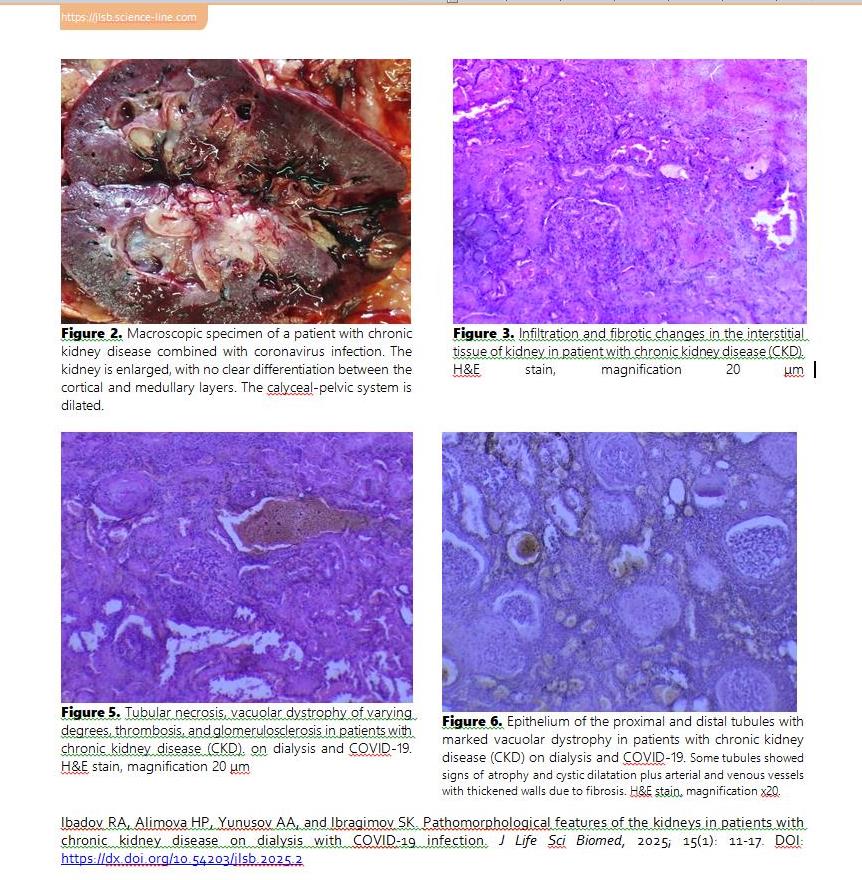 DOI: https://dx.doi.org/10.54203/jlsb.2025.2
DOI: https://dx.doi.org/10.54203/jlsb.2025.2
Abstract
The current study aimed to investigate the pathomorphology of the kidneys in patients with chronic kidney disease (CKD) on dialysis infected with COVID-19, focusing on structural changes and their correlation with the severity of the infection. The study included autopsy data from patients infected with COVID-19 who had been undergoing renal replacement therapy for 6 months to 1 year and died at the Zangiota Republican Specialized Center in 2022. The study was conducted using kidney biopsy samples. Morphological analysis included macroscopic examination, histological, and microscopic methods to identify signs of inflammation, fibrosis, and thrombosis. The results showed that kidneys of patients with COVID-19 were enlarged, with a granular surface and subcapsular hemorrhages. Histological examination revealed necrotic nephrosis, tubulointerstitial fibrosis, significant vascular involvement, and vacuolar degeneration of the tubules. Thrombosis of vessels and ischemic infarctions were frequently observed, correlating with the severity of COVID-19. The formation of focal segmental glomerulosclerosis, associated with chronic inflammation, was a notable feature. COVID-19 induces significant pathological changes in the kidneys of patients with CKD on dialysis, aggravating the course of chronic kidney failure. It is concluded that there is a need for early detection and prevention of renal complications in patient with COVID-19.
Keywords: Chronic kidney disease, COVID-19, Pathomorphology, Glomerulosclerosis, Dialysis.
[Full text-PDF] [ePub] [Export citation from ePrint] [How to Cite]
| Amiodarone-induced anaphylaxis in a Chihuahua: a case report |
Case Report
Amiodarone-induced anaphylaxis in a Chihuahua: a case report
Pehar B, Spahija N, Obhođaš M, and Maksimović A.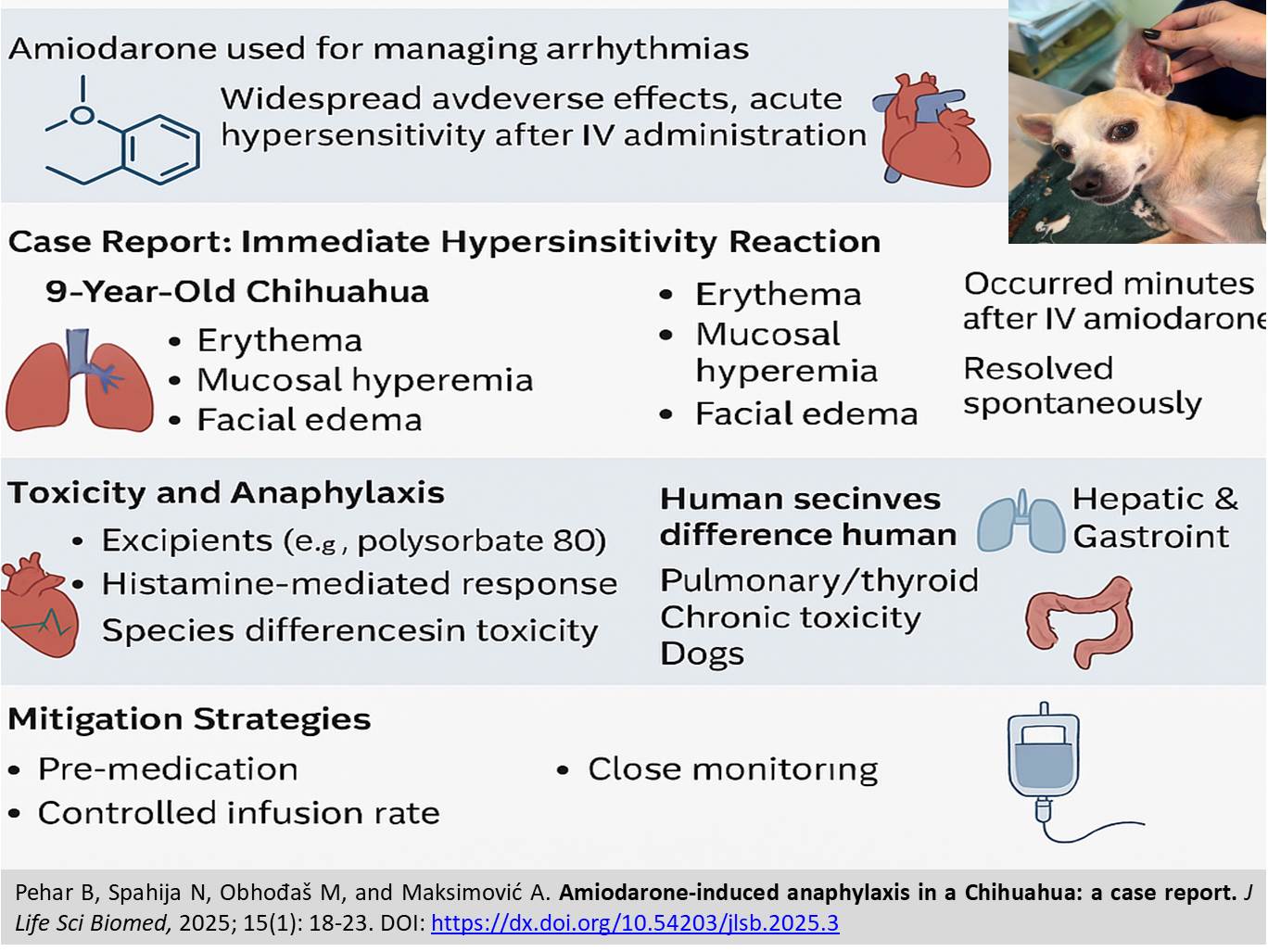 J. Life Sci. Biomed., 15(1): 18-23, 2025; pii:S225199392500003-15
J. Life Sci. Biomed., 15(1): 18-23, 2025; pii:S225199392500003-15
DOI: https://dx.doi.org/10.54203/jlsb.2025.3
Abstract
Amiodarone, a class III antiarrhythmic drug, is widely used in both human and veterinary medicine to manage ventricular and supraventricular arrhythmias. While its efficacy in rhythm control is well-established, the drug is associated with significant adverse effects, affecting multiple organ systems. In humans, amiodarone-induced toxicity commonly involves the pulmonary, hepatic, thyroid, and dermatological systems, with pulmonary toxicity being one of the most severe complications. Acute hypersensitivity reactions, including anaphylaxis, are rare but have been reported, particularly in association with intravenous (IV) formulations containing polysorbate 80. In veterinary medicine, amiodarone is increasingly used to treat life-threatening arrhythmias in dogs, yet its safety profile is less extensively studied. Unlike humans, dogs appear to be more susceptible to immediate hypersensitivity reactions following IV administration, characterized by severe cutaneous signs, hypotension, and cardiovascular collapse. The present case report describes a 9-year-old Chihuahua that developed a rapid hypersensitivity reaction, including erythema, mucosal hyperemia, and facial edema, immediately after receiving IV amiodarone. The reaction resolved spontaneously within 15 minutes without requiring corticosteroid administration. Haematological and biochemical analyses showed a mildly decreased reticulocyte value, elevated neutrophil count, and increased ALT, while all other parameters were within reference ranges. A review of the literature suggests that excipients such as polysorbate 80 and benzyl alcohol may be primary contributors to amiodarone-induced anaphylaxis in dogs. Histamine-mediated responses, severe hypotension, and cardiovascular complications have been documented in both human and veterinary cases, with dogs displaying heightened sensitivity to IV administration. Additionally, while pulmonary and thyroid toxicity are well-recognized chronic effects in human patients, hepatic and gastrointestinal toxicities are more frequently observed in dogs. This case underscores the need for heightened awareness of amiodarone-induced hypersensitivity reactions in veterinary medicine, particularly in IV formulations. Pre-medication strategies, controlled infusion rates, and close monitoring are essential to mitigating the risk of life-threatening anaphylaxis in human and canine patients. Further research is needed to better understand species-specific differences in amiodarone metabolism and toxicity.
Keywords: Amiodarone, anaphylaxis triggers, Chihuahua dog, hypersensitivity
[Full text-PDF] [ePub] [Export citation from ePrint] [How to Cite]
| Comparative study of pathomorphological changes in uterus and placenta during pregnancy with positive Omicron and Delta SARS‐CoV‐2 variants |
Research PaperCOVID-19
Comparative study of pathomorphological changes in uterus and placenta during pregnancy with positive Omicron and Delta SARS‐CoV‐2 variants
Tyan TV, and Mardonov JN. J. Life Sci. Biomed., 15(1): 24-33, 2025; pii:S225199392500004-15
J. Life Sci. Biomed., 15(1): 24-33, 2025; pii:S225199392500004-15
DOI: https://dx.doi.org/10.54203/jlsb.2025.4
Abstract
In recent years, numerous studies have been conducted to examine the effects of COVID-19 on pregnancy; however, the pathomorphological changes in the uterus and placenta during this infection remain under-researched. This study aimed to evaluate pathomorphological changes in the uterus and placenta of pregnant women with positive COVID-19 results compared to a non-infected control group. A prospective analytical study including 48 pregnant women tested positive for COVID-19 (24 cases with Delta and 24 Omicron variants) and 42 pregnant women in the control group was conducted. Placental and uterine samples were analyzed using standard histological methods. Results indicated that pregnant women with COVID-19 showed a significant increase in the frequency of retroplacental hematomas, villous hypoplasia, vascular ectasia, and other histopathological changes in the uterus and placenta, especially in women tested positive for Delta variant. This study underscores that Delta SARS‐CoV‐2 variant is associated with marked pathological changes in the placenta and uterus, highlighting the need for careful clinical management in such pregnancies.
Keywords: COVID-19, Delta (B.1.617.2) variant, Omicron (B.1.1.529), pathomorphology, placenta, pregnancy, SARS-CoV-2, uterus.
[Full text-PDF] [ePub] [Export citation from ePrint] [How to Cite]
| Health benefits of snail farming in Imo state, Nigeria: a life science and biomedical approach |
Research Paper
Health benefits of snail farming in Imo state, Nigeria: a life science and biomedical approach
Anyiam KH, Nwosu FO, Nwaiwu IUO, Kadiri FA, Obinna-Nwandikom CO, Osuji MN, Anyanwu UG, Enoch OC, Isaiah GI, Bala MB, Obasi AC, Madu JA, and Nnorom EI.
J. Life Sci. Biomed., 15(1): 34-41, 2025; pii:S225199392500005-15
DOI: https://dx.doi.org/10.54203/jlsb.2025.5
Abstract
Snail farming links food production, life sciences, and biomedicine, offering not only economic benefits but also vital health advantages. This study investigated the health benefits of snails, described the socioeconomic characteristics of snail farmers, compared the price elasticity of demand for snails with other animal proteins, and identified the key factors influencing profitability in snail farming within the study area. Data were collected through a well-structured questionnaire for 150 selected respondents using snowball sampling techniques. The data were analyzed using descriptive statistics, the elasticity model, the profit model, and ordinary least squares multiple regression. The results showed that 51.33% of respondents were male and 48.67% were female, with a mean age of 46 years, mean 6.8 persons per household, mean farming experience of 5.7 years, and 52.22% of respondents engaged in snail farming as their primary occupation. The price elasticity of demand for animal proteins was calculated, resulting in -0.24 for Archantina archantina and -1.10 for Archantina marginata. Snails were found to offer notable health benefits, including low cholesterol content, potential in asthma management, essential vitamins that aid in skincare and nutrients that support brain cell maintenance. The cost and return analysis revealed that a total of $235.67 was incurred, while $647.60 was realized from sales, resulting in a total profit of $411.92. Additionally, the factors affecting the profit of snail farmers were identified, including age, labour, stock size, and feed. The study recommended government intervention to scale up snail production and suggested that stakeholders in the snail industry adopt measures to promote both the production and consumption of snails.
Keywords: Demand, health benefit, profit determinants, snail production.
[Full text-PDF] [ePub] [Export citation from ePrint] [How to Cite]
Previous issue | Next issue | Archive
![]() This work is licensed under a Creative Commons Attribution 4.0 International License (CC BY 4.0)
This work is licensed under a Creative Commons Attribution 4.0 International License (CC BY 4.0)
Sustainable Development Goals (UN SDGs)
The Sustainable Development Goals are a call for action by all countries – poor, rich and middle-income – to promote prosperity while protecting the planet. They recognize that ending poverty must go hand-in-hand with strategies that build economic growth and address a range of social needs including education, health, social protection, and job opportunities, while tackling climate change and environmental protection.
Journal of Life Science and Biomedicine (JLSB) is pleased to declare its commitment to the United Nations Sustainable Development Goals (UN SDGs) Publishers Compact. It aims to accelerate progress to achieve SDGs by 2030.
Signatories aspire to develop sustainable practices and act as champions of the SDGs during the Decade of Action (2020-2030), publishing books and journals that will help inform, develop, and inspire action in that direction.
Furthermore, Scienceline Publications, Ltd and its journals like JLSB as a signatory of SDG Publishers Compact commit to:
1. Committing to the SDGs: Stating sustainability policies and targets on our website, including adherence to this Compact; incorporating SDGs and their targets as appropriate.
2. Actively promoting and acquiring content that advocates for themes represented by the SDGs, such as equality, sustainability, justice and safeguarding and strengthening the environment.
3. Annually reporting on progress towards achieving SDGs, sharing data and contribute to benchmarking activities, helping to share best practices and identify gaps that still need to be addressed.
4. Nominating a person who will promote SDG progress, acting as a point of contact and coordinating the SDG themes throughout the organization.
5. Raising awareness and promoting the SDGs among staff to increase awareness of SDG-related policies and goals and encouraging projects that will help achieve the SDGs by 2030.
6. Raising awareness and promoting the SDGs among suppliers, to advocate for SDGs and to collaborate on areas that need innovative actions and solutions.
7. Becoming an advocate to customers and stakeholders by promoting and actively communicating about the SDG agenda through marketing, websites, promotions, and projects.
8. Collaborating across cities, countries, and continents with other signatories and organizations to develop, localize and scale projects that will advance progress on the SDGs individually or through their Publishing Association.
9. Dedicating budget and other resources towards accelerating progress for SDG-dedicated projects and promoting SDG principles.
10. Taking action on at least one SDG goal, either as an individual publisher or through your national publishing association and sharing progress annually.
JLSB endorses the following SDGs except Goal 11:
 |
 |
 |
||
 |
 |
|||
 |
 |
 |
||
 |
Scienceline Publications, Ltd endorses all 17 goals of the SDGs.
To analyze UN SDGs research using Elsevier’s SciVal, please click here.
Previous issue | Next issue | Archive
![]() Volume 14 (4); December 25, 2024
Volume 14 (4); December 25, 2024
| Molecular characterizations of Toxoplasma gondii among pregnant women attending antenatal care at central Gondar zone public hospital, Northwest Ethiopias |
Research Paper
Molecular characterizations of Toxoplasma gondii among pregnant women attending antenatal care at central Gondar zone public hospital, Northwest Ethiopia
Meressa EW, Atanaw MB, Bicha MM, Eshetu MA, Abebe FK, Admasu AE, Kebede ML, Melese TS, and Tessemma NB.
J. Life Sci. Biomed., 14(4): 87-98, 2024; pii:S225199392400009-14
 DOI: https://dx.doi.org/10.54203/jlsb.2024.9
DOI: https://dx.doi.org/10.54203/jlsb.2024.9
Abstract
Toxoplasma gondii parasite that causes severe clinical problems such as congenital toxoplasmosis is a major public health problem that affects one-third of the world’s populationand is also associatedwith a high socioeconomic impact for pregnant women. Molecular characterizations for genotyping using PCR for the detection of T. gondii genotyping were grouped into three subtypes, designated I, II, and III, based on polymerase chain reaction restriction fragment length polymorphism (PCR-RFLP).This study aimed to determine molecular characterizations of T. gondii among pregnant women attending Anti-Natal Care (ANC) at Central Gondar Zone Public Hospitals (CGZPH), Northwest Ethiopia. Between 2022 and 2024, a cross-sectional study design was conducted to determine the molecular characterizations of T. gondii among pregnant women attending ANC at CGZPH. In this study, We determined the B1 and Surface antigen 2(SAG2) genotypes of T. gondii in pregnant women using PCR-RFLP. The genotyping data were coded for all genetic loci. Our research provides baseline information essential for planning and implementing control and prevention strategies, thereby enhancing the knowledge and epidemiology of toxoplasmosis. The study revealed that the T. gondii population in the Central Gondar Zone is predominantly represented by type II strains, which are most commonly associated with human toxoplasmosis. The use of PCR-RFLP at the SAG2 and B1 loci proved to be efficient method for rapid genotyping.
Keywords: Toxoplasma gondii, Molecular characterization, Pregnant women, Ethiopia
[Full text-PDF] [ePub] [Export citation from ePrint] [How to Cite]
| Horizontal gene transfer: the hidden hazards of genetic engineering |
Review
Horizontal gene transfer: the hidden hazards of genetic engineering
Meressa EW and Tseha BA.
J. Life Sci. Biomed., 14(4): 99-108, 2024; pii:S225199392400010-14
 DOI: https://dx.doi.org/10.54203/jlsb.2024.10
DOI: https://dx.doi.org/10.54203/jlsb.2024.10
Abstract
Horizontal or lateral gene transfer involves to the movement of genetic material between organisms in a manner that is not associated with traditional reproduction. This process can occur through direct methods or via vectors, and it contrasts with vertical gene transfer, where genes are passed to offspring. Genetic engineering often utilizes artificial constructs to cross species barriers and integrate in to genomes, facilitating unregulated horizontal gene transfer. These constructs which typically include genetic elements, can naturally mediate horizontal gene transfer. This can lead to the spread of diseases, antibiotic resistance, and even cancer in mammalian cells. Given these risks, it is crucial to establish effective regulatory measures to prevent the release of these constructs into the environment and to consider the continuation of potentially hazard experiments. This review aims to highlight the current status and implications of horizontal gene transfer facilitated by genetic engineering, emphasizing the need for stringent regulatory measures to mitigate associated risks.
Keywords: Antibiotic resistance, artificial vector, dormant viruses, CaMV promoter, naked DNA, transgenic DNA
[Full text-PDF] [ePub] [Export citation from ePrint] [How to Cite]
| Assessment of long-term hemodynamic changes following balloon valvuloplasty for pulmonary artery stenosis |
Research Paper
Assessment of long-term hemodynamic changes following balloon valvuloplasty for pulmonary artery stenosis
Zufarov MM, Umarov MM, and Ibadov RR.
J. Life Sci. Biomed., 14(4): 109-115, 2024; pii:S225199392400011-14
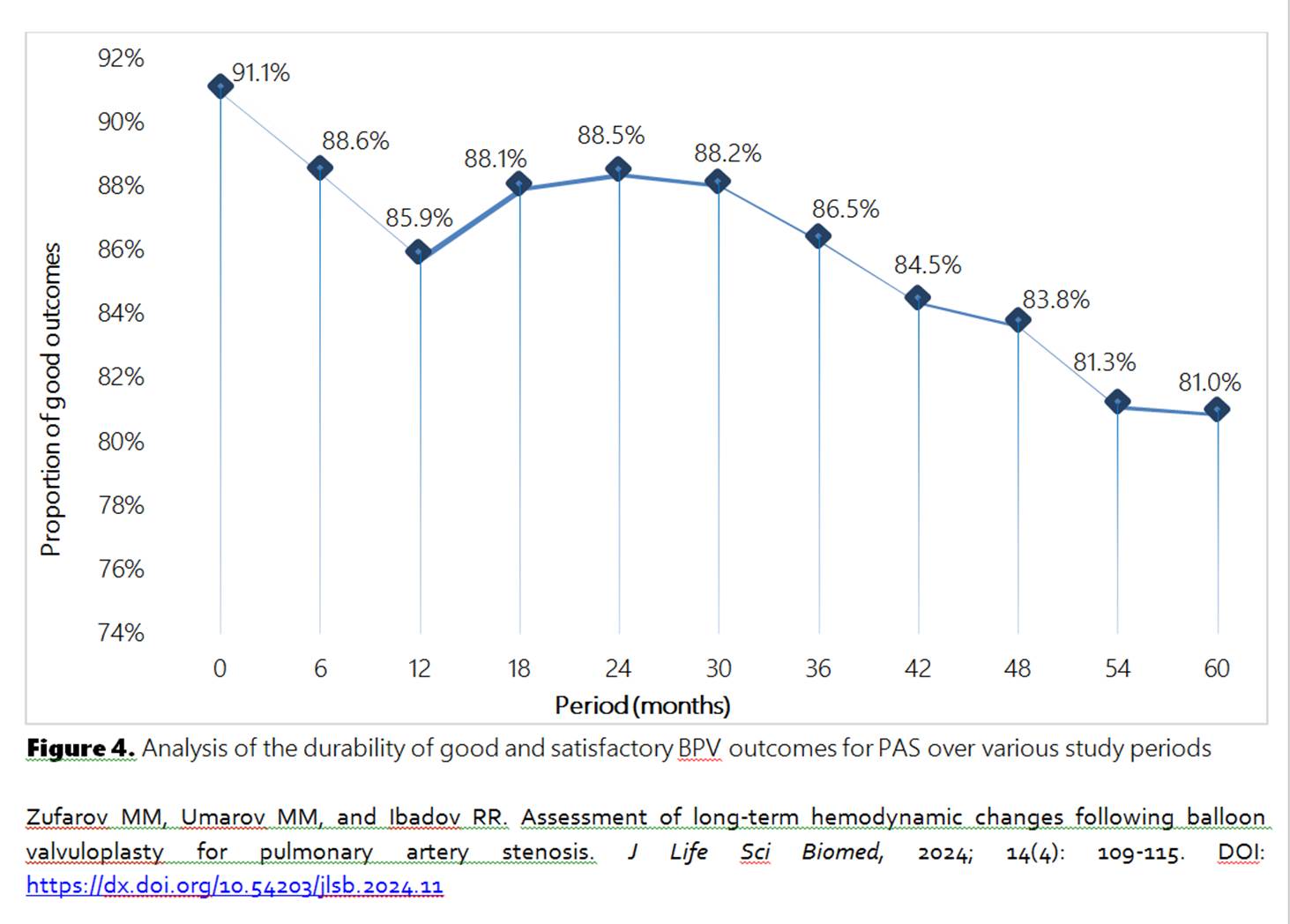 DOI: https://dx.doi.org/10.54203/jlsb.2024.11
DOI: https://dx.doi.org/10.54203/jlsb.2024.11
Abstract
Pulmonary artery stenosis (PAS) is a common congenital heart defect with a significant impact on the cardiovascular health of affected patients. Despite advancements in interventional cardiology, the long-term hemodynamic outcomes following balloon valvuloplasty (BV) for PAS remain insufficiently studied, especially in varying clinical and demographic subgroups. This knowledge gap necessitates further investigation. To assess long-term hemodynamic changes in patients with PAS after BV and analyze factors contributing to unsatisfactory outcomes. This single-center retrospective cohort study included 180 patients with PAS who underwent BV at the RSPPMCS named after Acad. V. Vakhidov between 2010 and 2022. Patients were categorized based on PAS type and baseline right ventricular systolic pressure (RVSP). Hemodynamic parameters were assessed using echocardiography and CT angiography. Kaplan-Meier survival analysis evaluated the durability of good and satisfactory outcomes. Statistical comparisons were made using t-tests and multivariate regression analysis, with p-values reported to three decimal places. Among the 180 patients, 144 (80.0%) had isolated valvular PAS, 27 (15.0%) had combined valvular-subvalvular PAS, and 9 (5.0%) had valvular-supravalvular PAS. Initial mean RVSP was 93.4±6.7 mmHg, which decreased significantly to 25.3±3.2 mmHg immediately post-BV (p<0.001). Long-term follow-up was achieved in 58 patients over five years, with mean RVSP stabilizing at 26.2±2.4 mmHg. Kaplan-Meier analysis revealed that 81.0% of patients maintained good outcomes at five years. Predictors of poor outcomes included inadequate balloon-to-annulus ratio (<1.2) and residual gradients ≥50 mmHg. Repeat BV improved outcomes in 100% of re-treated cases. BV demonstrates high efficacy in the long-term management of PAS, with sustained improvement in hemodynamics observed in most patients. Optimal balloon sizing remains critical to reducing residual gradients and ensuring long-term success. Further studies should explore additional predictors of restenosis to refine patient selection and procedural strategies.
Keywords: Pulmonary artery stenosis; balloon valvuloplasty; hemodynamic outcomes; congenital heart defects; long-term follow-up.
[Full text-PDF] [ePub] [Export citation from ePrint] [How to Cite]
| Evaluating the sensitivity and specificity of a rapid antigen screening test against real-time polymerase chain reaction for COVID-19 detection in northern Ethiopia |
Research PaperCOVID-19
Evaluating the sensitivity and specificity of a rapid antigen screening test against real-time polymerase chain reaction for COVID-19 detection in northern Ethiopia
Abebe B, Birhane N, Girmay G, Belete D.
J. Life Sci. Biomed., 14(4): 116-127, 2024; pii:S225199392400012-14
 DOI: https://dx.doi.org/10.54203/jlsb.2024.12
DOI: https://dx.doi.org/10.54203/jlsb.2024.12
Abstract
Early diagnosis and treatment of COVID-19-positive patients are crucial to limiting complications and transmission. Despite real-time PCR being considered a gold standard for the diagnosis of COVID-19, its availability is still limited. There is a paucity of studies that show the sensitivity and specificity of rapid antigen tests (RAT) in Ethiopia. This study aimed to evaluate the sensitivity, specificity and predictive values of rapid antigen tests for the diagnosis of sever acute respiratory syndrome coronavirus type-2 (SARS-COV-2 among COVID-19 suspected patients. A hospital-based cross-sectional study was conducted on COVID-19-positive and negative individuals in the University of Gondar Comprehensive Specialized Hospital from December 26, 2022, to April 30, 2023. Socio-demographic, behavioral, and clinical data were collected using a structured questionnaire. All nasopharyngeal or throat swabs were tested using the PanbioTM COVID-19 rapid antigen test and the BIO-RAD CFX connectTM reverse transcription-polymerase chain reaction. Sensitivity, specificity, Kappa, and positive and negative predictive values were analyzed using the online Medcalc statistical tool to determine the diagnostic performance of the rapid antigen test using the RT-PCR reference method. Out of 120 participants, 53.3% were female. In this study, sensitivity, specificity, and accuracy of the PanbioTM rapid antigen test were 98.36%, 100%, and 98.33%, respectively The positive and negative predictive values were 100% and 99.17%, respectively. The Kohen’s kappa statistic was 0.983 at 50% estimation of the disease prevalence. PanbioTM rapid antigen test resulthowed outstanding agreement with RT-PCR using a nasopharyngeal or nasal swab from symptomatic patients. The RAT affordable and provides immediate outcome with in short period of time. In order to quickly identify the positive cases and put isolation and infection control measure in place, this test can be used in regions where the numbers SARS-CoV-2 cases is fast increasing.
Keywords: COVID-19, diagnostic performance, PanbioTM, rapid antigen test
[Full text-PDF] [ePub] [Export citation from ePrint] [How to Cite]
Previous issue | Next issue | Archive
![]() This work is licensed under a Creative Commons Attribution 4.0 International License (CC BY 4.0)
This work is licensed under a Creative Commons Attribution 4.0 International License (CC BY 4.0)

